The 10 essential tools in my martech stack
If I had to narrow it down to just 10 marketing tools (not an easy task), these are the ones that would 100% make the cut.
TOOLS
Elena
8/11/202412 min read


Every marketer has their go-to tools that they can’t live without. For me, understanding someone’s martech stack is like getting a glimpse into their marketing mindset. It reveals how technical and innovative they are, and how willing they are to explore beyond the conventional.
While I’m tech-agnostic and love experimenting with new tools, there are a few that I always come back to. Some might not fit the traditional software definition, but they are essential to my daily work.
So, here’s my list of must-have marketing tools, why I love them so much aaand just a healthy dose of constructive criticism:
1. Semrush
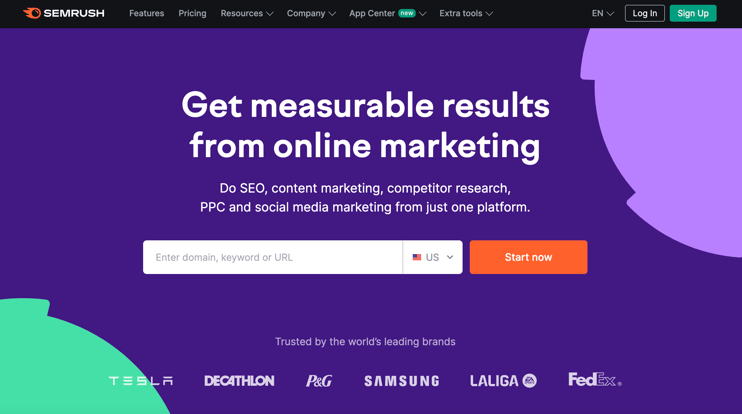

I’d be lying if I said SEMrush has been an essential part of my marketing toolkit since day one. While I could somewhat imagine how powerful it was, in my beginnings I used more user-friendly SEO tools, such as UberSuggest or AnswerThePublic (which has been acquired by homie Neil Patel anyway).
That changed once I fully immersed myself in it. In my opinion, SEMrush excels at providing deep insights into technical SEO, keyword research, content ideas, and competitive analysis.
Features I love the most:
PKD and topic authority: These newest AI-powered features provide a fascinating edge in assessing the feasibility of ranking for a topic. Personal Keyword Difficulty gives a realistic assessment of how hard it would be to rank for a specific keyword, factoring in your site's current authority and content quality. Topic Authority goes a step further by analyzing your site's thematic relevance, showing how well your content aligns with the target topic. This dual approach ensures you’re not just targeting the right keywords but also leveraging your existing strengths, making your SEO strategy more effective and efficient.
Keyword magic tool: This one’s a classic I’ve been using for many years, and it’s still incredibly useful. It not only generates a vast array of keyword ideas but also categorised them by topic, search volume, and competitive difficulty. The filtering options allow me to drill down into specific keyword metrics, making it easier to find the gems that fit perfectly into my content strategy. True, many good SEO tools now offer similar features, but for me, this was one of the "wow" moments with SEMrush, so I’m sticking with it.
Keyword gap analysis: This report allows me to compare my keyword profile with those of my competitors, and THE IDEAS YOU GET 🤌 It identifies untapped keyword opportunities and shows you the content strategy that your competitors are using.
Competitors backlink analysis: Similar to the Keyword gap analysis, it feels like spying on your competitors' inbound marketing strategy, and I will never get tired of that.
What could be improved:
Pricing. SEMrush offers a lot of value, but its pricing can be prohibitive for small businesses and solo marketers. I’d still pay for it, but it’s only a matter of time until other competitors offer the same level of quality at a much cheaper rate (Dinorank is becoming a super interesting alternative for SEO)
Learning curve. While powerful, SEMrush can be overwhelming for beginners (it certainly was for me). More intuitive onboarding tutorials and simplified user interfaces for basic tasks could help new users get up to speed faster.
2. Reddit


Reddit offers a raw, unfiltered view into the thoughts and conversations of real people. It’s a goldmine for understanding customer pain points, discovering new trends, and gathering genuine feedback with the exact wording my prospects are using.
I could spend hours navigating from one thread to another (though that can sometimes lead you to some dark places).
Features I love the most:
Subreddit communities: The vast array of subreddit communities allows me to dive into niche topics and engage with specific target audiences. Each subreddit offers a unique perspective, whether it's a highly specialised industry or a broad interest group. By participating in these discussions, I can gather insights and feedback that are invaluable for refining my marketing strategies.
Advanced search: The subreddit search functionality helps me find specific discussions and threads related to my industry or interests. By filtering results based on relevance, date, and popularity, I can efficiently sift through the vast amount of content and focus on the most pertinent information.
What could be improved:
Paid placements: I’ve done paid ads on Reddit, in the hope it could easily target my niche, and it certainly does, but it also exposes you to trolls and heavy criticism. Other than that, I’ve found that CPMs and CPCs are incredibly cheap, so it might be worth a try if you’re looking for vast exposure, you’re aware of the potential risks you may face, and create ads that don't sound too salesy.
3. Chat GPT
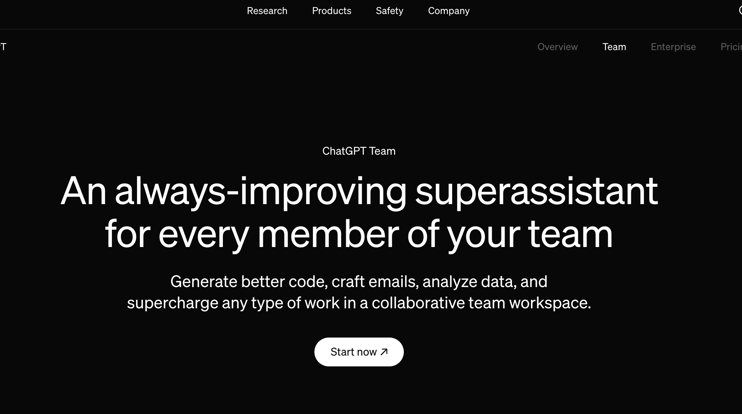

While it’s a multipurpose tool, ChatGPT works wonders in many aspects of my marketing workflow. I may never rely on it 100% for creating a marketing strategy, but with good prompting, it can easily save 70-80% of my time and effort. And I just love efficiency above all else.
So yeah, whether it's handling easy, automated tasks, getting started on complex projects, or brainstorming ideas, ChatGPT is becoming like another colleague to me (the efficient type of).
Features I love the most about ChatGPT:
Creating and using trained GPTs: The ability to create and use custom-trained GPT models tailored to specific needs is incredibly powerful. By training models on specific datasets or areas of interest, I can ensure that the output is highly relevant and accurate, saving time on repetitive tasks and providing more insightful, context-aware responses.
Reading and analysing images: While still developing, ChatGPT’s capability to read and analyse images is very promising as it will allow for automating complex tasks that involve both visual and textual data.
What could be improved:
Direct audio transcription: One feature I’d love to see is the ability to transcribe audio directly. I know that combining ChatGPT with speech-to-text APIs can provide transcriptions indirectly, but having this capability built-in would be immensely helpful. Considering it already can read and analyse images, adding native audio transcription doesn't seem too far off.
Reducing recurring phrases: On my ChatGPT wishlist, I’d include eliminating those recurring phrases and words that give it away. You know the ones: “In today’s competitive world…” or “In the realm of…”. These repetitive patterns are too predictable and detract from the natural flow of the text.
4. Canva
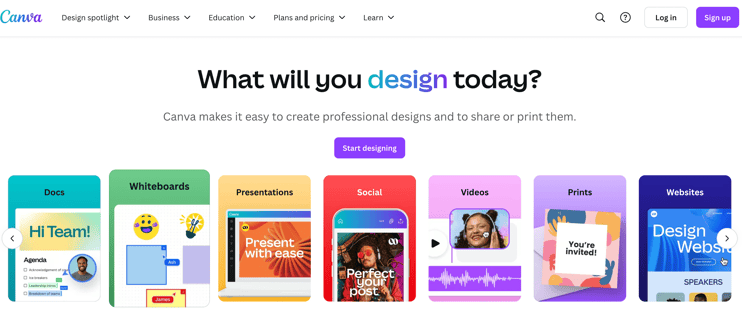

I was almost tempted not to include Canva in this list, as it's every marketer's go-to app lately, but the truth is Canva is invaluable, and it’s worth every penny.
So, if you’re a marketer and you’ve never used Canva before, I really don’t know where you’ve been for the last few years. To state the obvious, it helps massively when you’re just one person acting as a full marketing team, and your design skills are far from professional.
Features I love the most about Canva:
Combination of ease of use with advanced capabilities: Canva strikes a perfect balance between ease of use and advanced design capabilities. If you’re a designer, you’ll be able to create wonders on your own. But even if you have no idea about Photoshop or other editing software, you can still produce high-quality assets in a simple, easy, and affordable way.
What could be improved:
More varied assets: While Canva excels in simplicity and accessibility, you will eventually encounter a point where the graphics and images start to feel repetitive. This limitation can be frustrating when you’re striving for unique designs, but fairly enough that’s not Canva’s purpose. To elevate your design game beyond this point, the best option is to hire a dedicated designer rather than complicating the tool.
5. Pathmonk
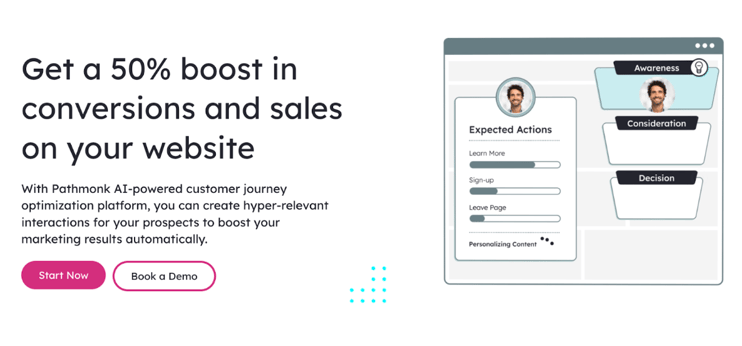

Most marketers focus their efforts on TOFU actions like SEO, basic paid campaigns, and social media. These tactics can help bring awareness to your brand and drive traffic to your website, but what happens next? Marketing is about creating a coherent journey, and it’s crucial to keep investing in converting that traffic into customers rather than letting them leave your site.
Pathmonk does exactly this by creating a personalised buying journey based on real-time visitor intent with AI-generated experiences, automatically increasing conversions.
Features I love about Pathmonk:
Customer journey analytics: I haven’t found this feature in any other analytics tools and I love seeing how my funnel performs at each stage, or to compare the performance across different channels. Once you visualise funnel analytics, there’s no going back to old-school Google Analytics traffic dashboards.
Guaranteed conversions: Another great thing about Pathmonk is that it always increases conversions AS their CRO efforts are data-backed, ensuring results can't be worse than without it. They offer a money-back guarantee for increases lower than 20%. However, their real-time monitoring status currently shows a baseline improvement of 24%, which translates to A LOT of new opportunities.
What could be improved:
Product user interface: While the tool is incredibly powerful, some actions could be more intuitive. Us marketers like intuitive and beautiful products, and I think future product improvement comes from this area.
6. YouTube
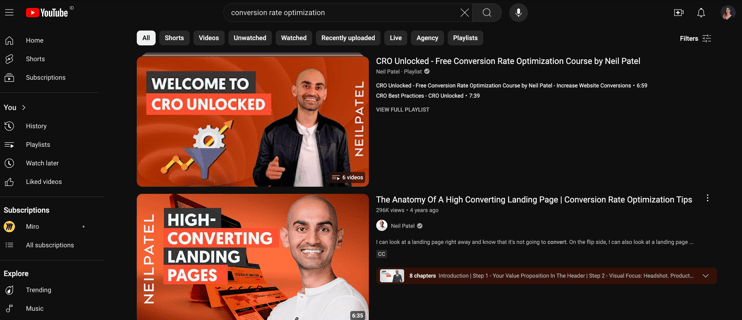

YouTube is an old favorite that never stops delivering value. This multipurpose platform is a goldmine for marketers. It offers extensive exposure through paid ads, enhances SEO, can allow you to give your brand a more personal image, facilitates collaborations with industry leaders, allows for audience-targeted playlists, fosters interaction with prospects, and provides a wealth of podcasts and inspiration.
Is there anything I don’t like about it? 😂 Well, there is.
Features I love about YouTube:
Helps boost your SEO efforts: YouTube is fantastic for enhancing SEO, especially with Google’s latest updates. Hosting videos on the platform will make your content more discoverable and ultimately drive organic traffic to your site. Additionally, you can leverage features such as tags, timestamps, and transcripts to make it easier for the crawler to index it.
Comment sections: I’m not going to lie, sometimes I spend more time on the comment sections than watching the actual video. As with Reddit, I love reading unfiltered comments and getting user feedback.
What could be improved:
Algorithm reinforces big-name creators: The algorithm tends to favor established, big-name creators, making it hard for niche content creators to get noticed, often the ones that have higher quality content for very specific topics.
Ads can be very disruptive: Ads on YouTube can be incredibly annoying, loud, and often too repetitive. In my opinion, there's a point where an ad goes from making the consumer interested in buying your product to making him frustrated and mad, and that point is when the advertisement forces you to watch or to listen to it. So, while I still enjoy some ads that I get (hello Monday.com!) 80% of the time I just skip it.
7. TikTok
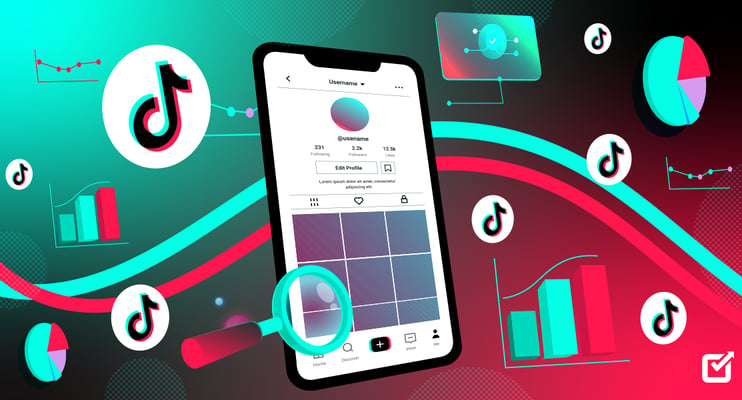

I’ve heard many marketers say LinkedIn is one of their go-to tools, but I’m becoming increasingly tired of it. Sure, there are a few content creators I follow who always deliver interesting insights, and I still use it for both work and personal branding. However, I wouldn’t say it’s one of my essentials.
TikTok, on the other hand, is rapidly becoming a fantastic platform for both B2C and B2B marketers. It’s affordable, the algorithm can help you grow relatively quickly, and it’s a great place to stay informed. I feel like when something reaches mainstream news, it’s usually been on TikTok first.
Features I love about TikTok:
Longer videos and more engaged audience than Instagram: TikTok offers the ability to share videos up to 10 minutes long, a significant increase from Instagram's one-minute limit for regular posts and up to 90 seconds for Reels. This extended time allows creators to dive deeper into their content, tell more compelling stories, and keep viewers engaged longer.
Best for partnerships with content creators: TikTok has proven to be an excellent platform for partnerships with content creators. The community-driven nature of TikTok, coupled with its powerful recommendation algorithm, makes it easier for brands to collaborate with influencers and create engaging content that feels organic rather than forced.
What could be improved:
Bot moderation: From my experience with TikTok and some odd analytics on paid campaigns, it seems there are still a lot of bot profiles on the platform. Improved bot moderation would enhance the experience for brands and the accuracy of analytics.
8. Typeform
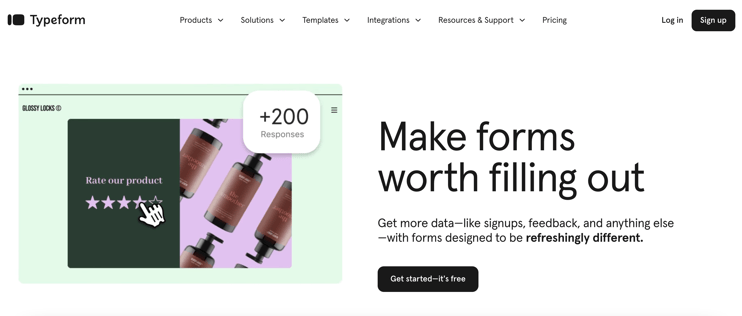

There’s a before and after in the marketing world thanks to Typeform. This is one of those tools that are not only useful but delightful. The kind of stuff that makes you want to use it because of how smooth and beautiful it is. As you can deduct, I’m a big Typeform lover, so having used it since their beginnings I’m ver happy to see how far they’ve gone (it’s also a Spanish company so extra proud of them).
Features I love about Typeform:
It does what it has to in the best possible way: Surveys can be very boring and, as a marketer, I know how hard it is to gather feedback and not lose people’s interest. So, for me, Typeform’s aesthetics, ease of use, and just pleasing interface is the number one thing for me.
Integrates with all marketing tools: This is one of the things I can see they’ve worked harder since they launched. Being able to receive your questionnaires in any platform heavily simplifies the process and
What could be improved:
Nothing really, it’s the type of tool that does what it has to do and there’s no need to over complicate it. If anything, I think at some point they could add a feature for recruiting a pool so it’s easier for marketers to get answers if they need to sample a target audience.
9. HubSpot
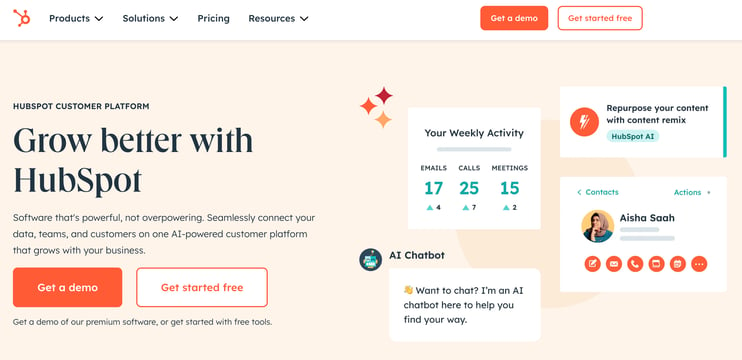

HubSpot is a classic for a reason. While I've worked with many CRMs, including Salesforce and Zoho, HubSpot consistently stands out as the superior choice in my opinion. What sets it apart among the big players is its user-friendliness, paired with a vast range of capabilities. If I were to suggest an alternative, Pipedrive would be my pick. It's incredibly intuitive and offers many of the essential features that every marketer needs.
Features I love about HubSpot:
Workflows: the things you can do on HubSpot workflows are INSANE. However, unless you’re proficient on the platform, they will probably remain underused.
HubSpot certifications: this is a smart acquisition tactic and an excellent way to build a loyal user base. HubSpot certifications not only ensure that marketers can effectively use the platform, but they've also become a must-have credential for inbound professionals. Beyond the commercial intent, these certifications provide a wealth of practical, ready-to-implement skills.
What could be improved:
Pricing: HubSpot's main drawback is its pricing structure. As your usage grows, costs can skyrocket, making it unsustainable for many companies. Unlike other digital products like SEMrush, unless there's a compelling deal or it's crucial for the business, I might opt for a different CRM. Despite this, HubSpot remains my preferred choice.
Automation and analytics: HubSpot's analytics is significantly flawed, with major discrepancies between HubSpot's data and Google Analytics. This issue complicates reporting and automation, making it necessary to cross-reference data with other tools, which adds complexity to the workflow.
10. Zapier
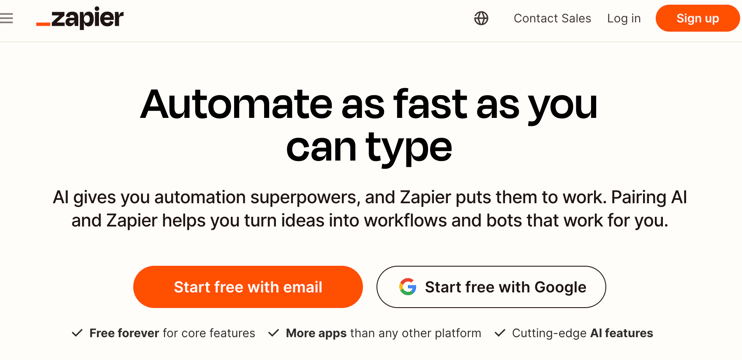

Zapier has become an essential tool in the world of automation, especially for marketers looking to streamline their workflows without the need for extensive coding knowledge. What I believe sets Zapier apart is its ability to connect different apps and automate virtually any task seamlessly, making it a go-to solution for those who want to save time and reduce manual effort.
Features I love about Zapier:
App integrations: Zapier's ability to connect over 2,000 apps is a game-changer. Whether it's syncing data between your CRM and email marketing platform or automating social media posts, Zapier can do it all.
Being autonomous from engineers/developers: One of my favourite things about Zapier is its ability to empower marketers to create and manage automations without relying on engineers or developers. Big love here Zapier folks ❤️
What could be improved:
Pricing: While Zapier offers a free tier, its pricing escalates quickly as you start adding more Zaps and tasks. For small businesses or individuals, this can become a significant expense, especially if you’re heavily reliant on automation.
Initial learning curve: I’ve grown to love Zapier, but I remember finding it challenging in my early days using it. However, the satisfaction of setting a Zap up and seeing how it works smoothly, is immensely satisfying!